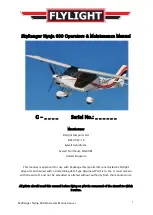
DG Flugzeugbau GmbH
Flight Manual LS 8-18 Normal
Procedures
4.5.10.4 Maximum Wing Water Ballast
Cockpit Load (Pilot +
Empty Mass
Par equipment)
[kg]
[kg]
250 255 260 265 270 275 280 285 290 295
70
190
190
187
183
178
173
168
163
159
154
75
190
187
183
178
173
168
163
159
154
149
80
187
183
178
173
168
163
159
154
149
144
85
183
178
173
168
163
159
154
149
144
139
90
178
173
168
163
159
154
149
144
139
135
95
173
168
163
159
154
149
144
139
135
130
100
168
163
159
154
149
144
139
135
130
125
105
163
159
154
149
144
139
135
130
125
120
110
159
154
149
144
139
135
130
125
120
115
Cockpit Load (Pilot +
Empty Mass
par equipment)
[lbs]
[lbs]
551 562 573 584 595 606 617 628 639 650
154
419
419
412
403
392
381
370
359
351
340
165
419
412
403
392
381
370
359
351
340
328
176
412
403
392
381
370
359
351
340
328
317
187
403
392
381
370
359
351
340
328
317
306
198
392
381
370
359
351
340
328
317
306
298
209
381
370
359
351
340
328
317
306
298
287
220
370
359
351
340
328
317
306
298
287
276
231
359
351
340
328
317
306
298
287
276
265
242
351
340
328
317
306
298
287
276
265
254
Warning: Wing water ballast must always be compensated with tail fin water ballast
according to tables page 4-12.
Edition: July 1999
LBA-appr. Revision - 0
Page 4-11
















































